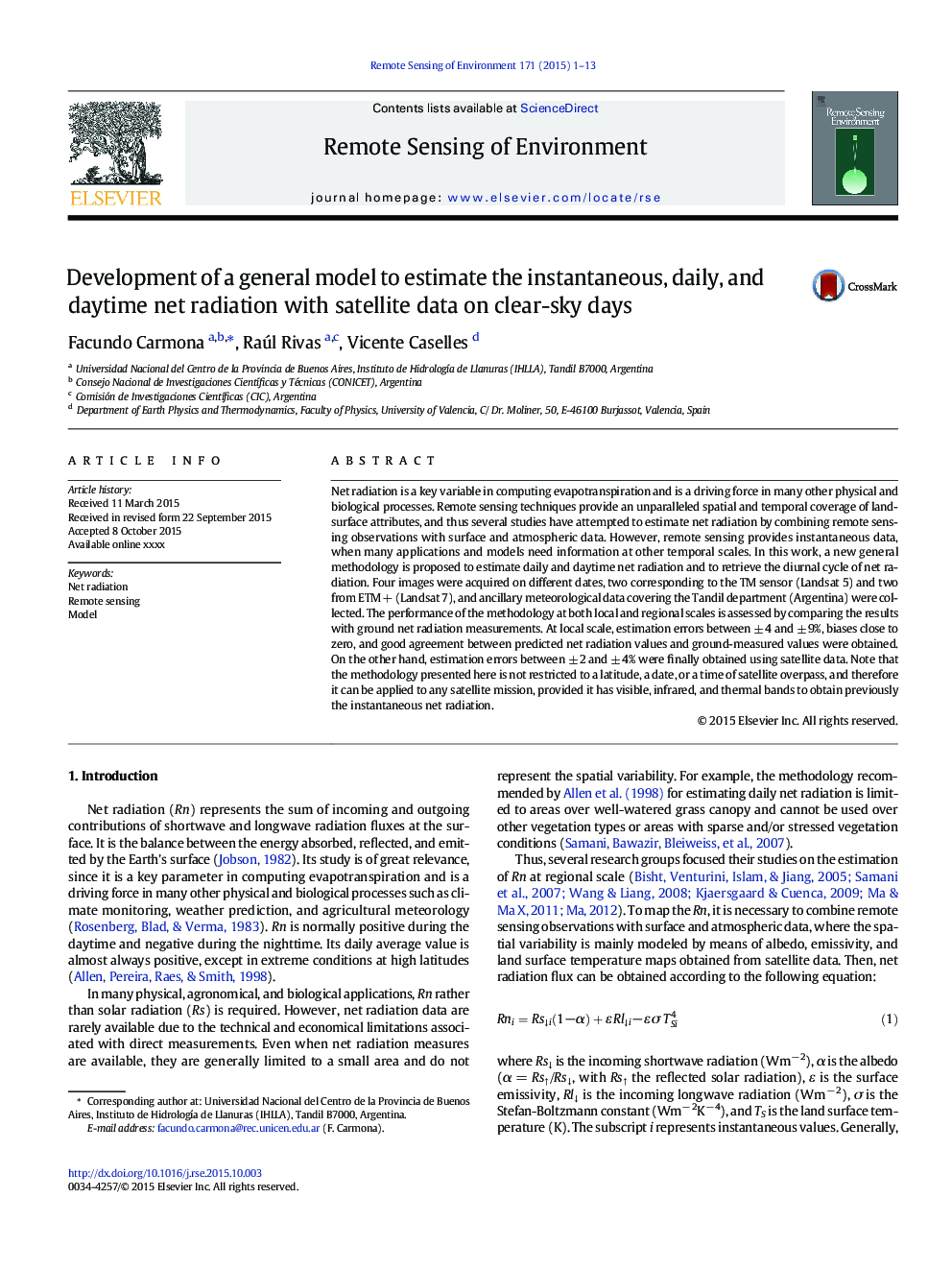| Article ID | Journal | Published Year | Pages | File Type |
|---|---|---|---|---|
| 6345738 | Remote Sensing of Environment | 2015 | 13 Pages |
Abstract
Net radiation is a key variable in computing evapotranspiration and is a driving force in many other physical and biological processes. Remote sensing techniques provide an unparalleled spatial and temporal coverage of land-surface attributes, and thus several studies have attempted to estimate net radiation by combining remote sensing observations with surface and atmospheric data. However, remote sensing provides instantaneous data, when many applications and models need information at other temporal scales. In this work, a new general methodology is proposed to estimate daily and daytime net radiation and to retrieve the diurnal cycle of net radiation. Four images were acquired on different dates, two corresponding to the TM sensor (Landsat 5) and two from ETM + (Landsat 7), and ancillary meteorological data covering the Tandil department (Argentina) were collected. The performance of the methodology at both local and regional scales is assessed by comparing the results with ground net radiation measurements. At local scale, estimation errors between ± 4 and ± 9%, biases close to zero, and good agreement between predicted net radiation values and ground-measured values were obtained. On the other hand, estimation errors between ± 2 and ± 4% were finally obtained using satellite data. Note that the methodology presented here is not restricted to a latitude, a date, or a time of satellite overpass, and therefore it can be applied to any satellite mission, provided it has visible, infrared, and thermal bands to obtain previously the instantaneous net radiation.
Keywords
Related Topics
Physical Sciences and Engineering
Earth and Planetary Sciences
Computers in Earth Sciences
Authors
Facundo Carmona, Raúl Rivas, Vicente Caselles,
